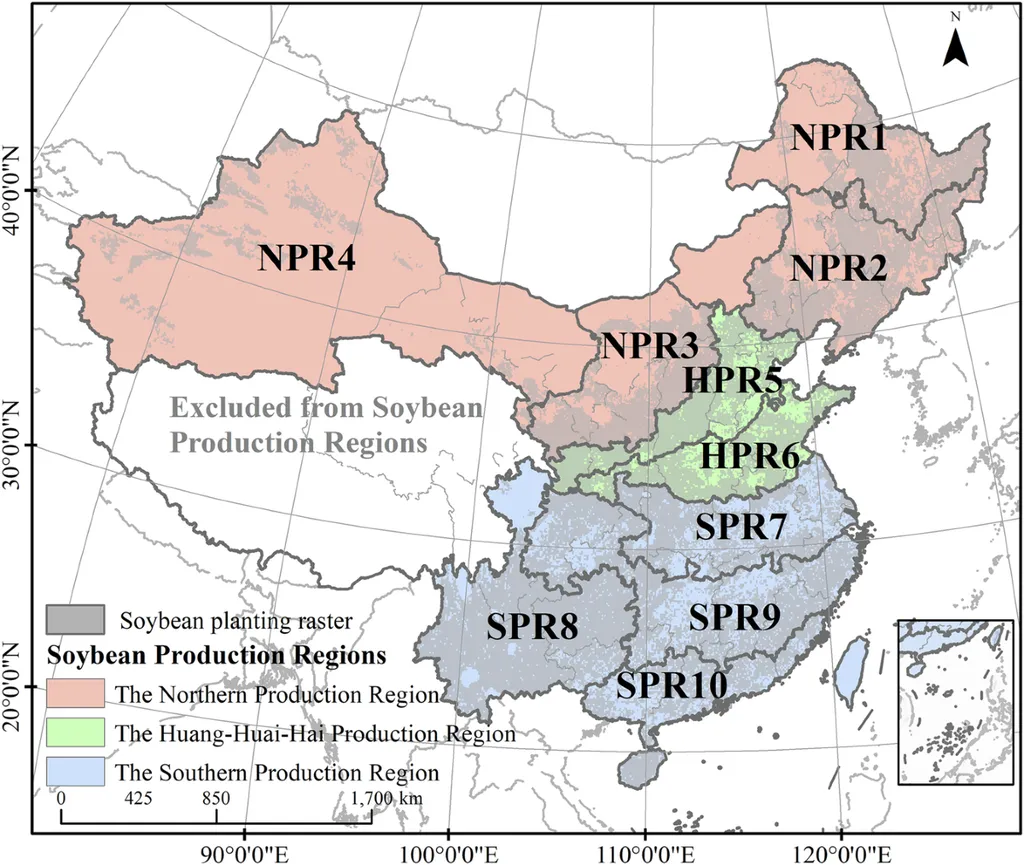In the heart of China’s Huang-Huai-Hai Plain, a region critical to soybean production, a groundbreaking study led by Lei Yang from the Crop Research Institute at the Anhui Academy of Agricultural Sciences is challenging conventional wisdom and offering new pathways to boost soybean yields. The research, published in the Journal of Agriculture and Food Research (translated as 《农业与食品研究》), delves into the intricate balance between plant density, source-sink dynamics, and pod-setting characteristics, providing actionable insights for farmers and agronomists alike.
The study, conducted over two years, explored the effects of varying plant densities (PD) on soybean productivity. The findings reveal that increasing plant density can significantly enhance yield, but only up to a certain point. “We found that as plant density increased, individual plant productivity decreased, but the population-level productivity and seed yield peaked at 315,000 plants per hectare,” explains Lei Yang. This optimal density represents a 22% to 40% increase over the current standard of 225,000 plants per hectare in the region.
The research highlights a critical transition in yield constraints as plant density rises. Initially, higher densities boost light interception and leaf area index, driving increased productivity. However, beyond the optimal density, the study observed a shift in photoassimilate allocation, where resources are diverted to stems and leaves at the expense of yield sinks like seeds. “This indicates a shift from source-limited to sink-limited yield constraints,” Yang notes, emphasizing the importance of understanding these physiological mechanisms.
One of the most compelling findings is the improvement in pod-setting characteristics at higher densities. The study found that increased plant density enhanced the proportion of 3-seed pods, middle-node pods, and main stem pods, all of which contribute to higher yields. This optimization of pod-setting traits, coupled with balanced individual and population productivity, makes densities of 270,000 and 315,000 plants per hectare the most suitable for regional cultivation.
The commercial implications of this research are substantial. By adopting these optimized plant densities, farmers in the Huang-Huai-Hai Plain can potentially increase their soybean yields by up to 2.6% per additional 10,000 plants per hectare, up to the optimal density. This not only addresses the region’s soybean production shortfall but also enhances economic returns for farmers.
The study also offers broader insights into the source-sink dynamics and pod-setting mechanisms under varying plant densities. These findings could pave the way for future research and agricultural practices aimed at maximizing crop productivity. As the global demand for soybean continues to rise, understanding and applying these principles will be crucial for meeting production targets and ensuring food security.
In the words of Lei Yang, “This research provides a new perspective on how to optimize plant density to enhance soybean productivity. It’s not just about increasing the number of plants; it’s about understanding the physiological responses and optimizing the balance between source and sink.” This nuanced approach could very well shape the future of soybean cultivation, not just in the Huang-Huai-Hai Plain, but potentially worldwide.

